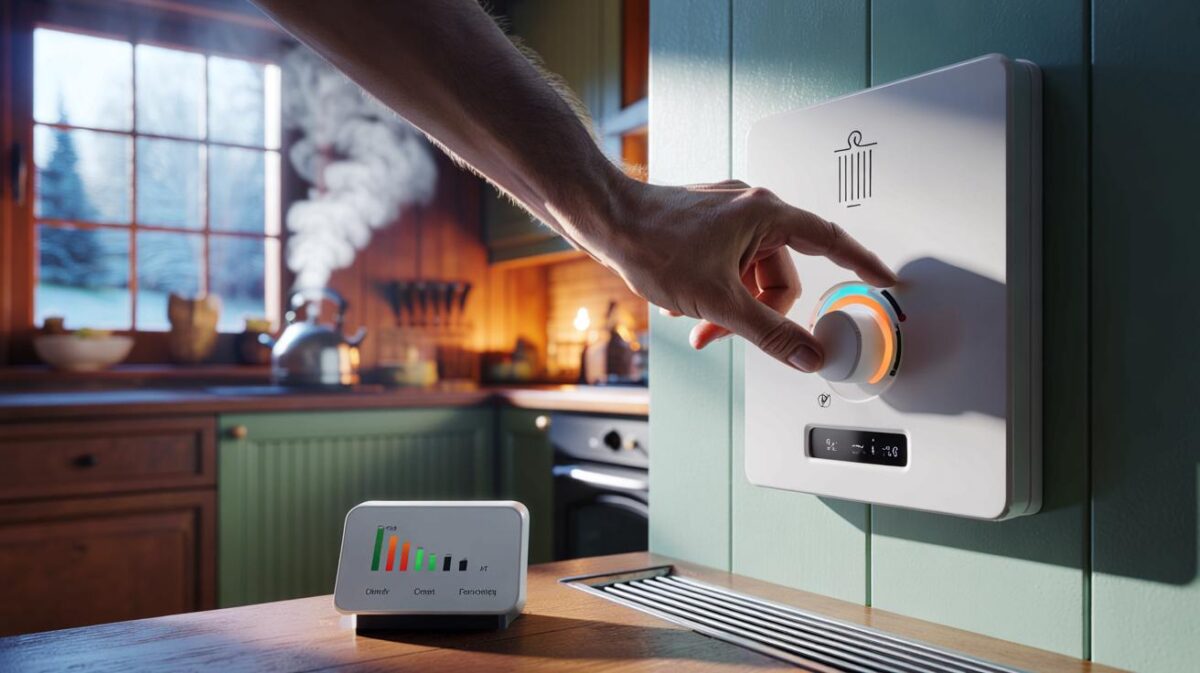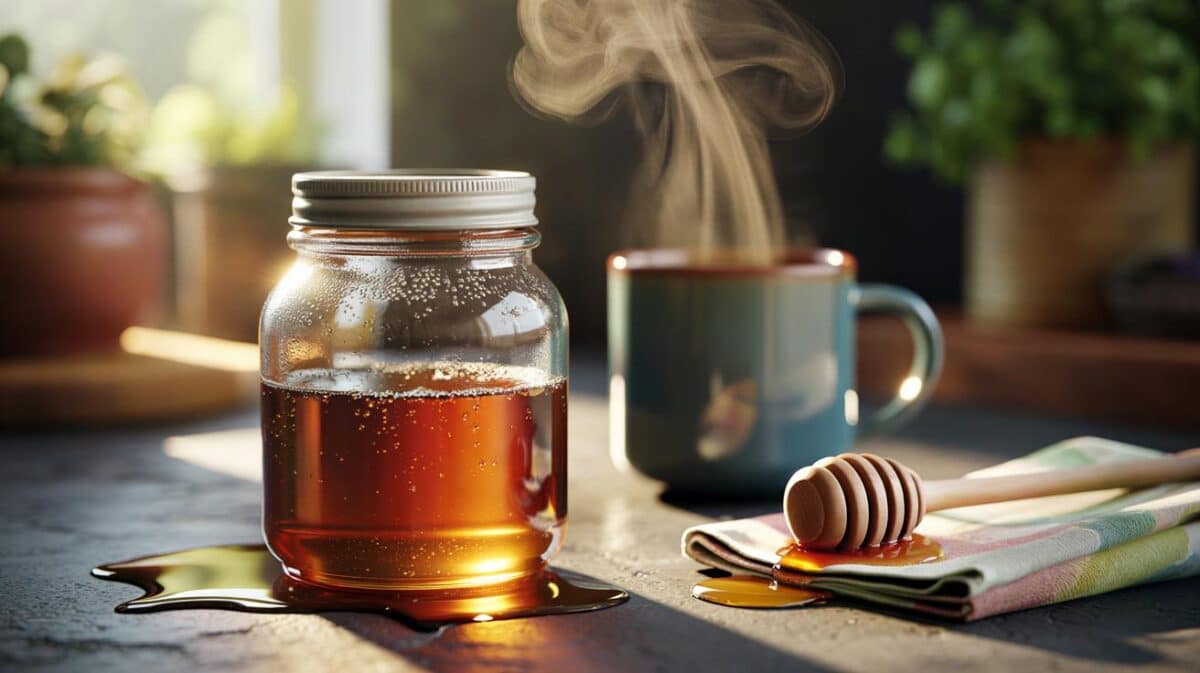That whitish, furry bloom creeping across your plaster isn’t just ugly. It’s a message from your house that water is moving where it shouldn’t — and it won’t stop until you help the wall breathe again.
Along the skirting, the paint had blistered into brittle bubbles, and a powdery rime dusted the brick like frost on a windscreen. He’d wiped it before. He’d painted it before. The bloom always returned, stubborn as limescale on a tap.
We stood there, mugs cooling, and listened to the drip from a tired gutter, the radiators clicking, a neighbour’s radio leaking through plaster and time. He’d tried everything he could think of that came in a bottle. The wall just shrugged and made more crystals. I put my hand on the cold patch and felt the story in the bricks.
It was trying to tell us something.
Saltpetre on your walls: what that white bloom really says
Saltpetre is the old name builders use for the salt crystals that bloom when moisture travels through masonry, carrying dissolved minerals to the surface. As the water evaporates, the salts stay behind like tide marks on a beach. It looks like sugar dusting or shaving foam dried to chalk.
In older homes with solid walls, you’ll often see it along skirtings, chimney breasts, or behind wardrobes where air doesn’t move. One reader sent me a photo of a Victorian hallway: fresh paint, new tiles, and a ragged white crust mushrooming overnight along the base of a wall. He’d repainted three times. Each layer bubbled like pastry in the oven.
What’s going on is simple physics with messy consequences. Ground moisture and indoor humidity find tiny capillaries in brick and mortar. They drag salts — nitrates from old soils and drains, chlorides near roads, sulphates from the masonry itself — to the surface. When that water evaporates, the salts crystallise and expand. Paint flakes. Plaster softens. And if you trap the wall under plastic or impermeable paint, the crystals keep growing behind the finish, stronger than your brushwork every single time.
Natural, effective ways to stop the cycle for good
Start gentle. Let the wall dry as you remove the salts, not the other way around. Use a stiff natural-bristle brush and a vacuum with a HEPA filter to lift loose crystals without grinding them into the pores. Rinse lightly with distilled water on a sponge to dissolve residue, then dry the surface with moving air — an ordinary fan works. On non-calcareous brick or dense concrete, a mild white vinegar wash (1:8 with water) can help dissolve surface salts; rinse after, then dry. Skip acid on limestone, marble, or soft lime plaster.
Next, stop the moisture taxi service. Clear gutters. Re-seat downpipes. Lower soil or paving that sits above your internal floor level. Repoint failed joints with lime, not cement, so the wall can exhale. Improve ventilation in dead corners with trickle vents, a quiet extractor in the bathroom, or just a small gap behind big furniture. Let’s be honest: nobody actually does this every day. But a 10‑minute sweep after rain and a monthly look at the outside can save you a repaint every spring.
This is where the mindset shifts from scrubbing to listening. A conservation bricklayer in Yorkshire told me something that stuck.
“Treat the source, not the symptom. If the wall can breathe, the salts have nowhere grand to grow.”
- Fix runoff first: gutters, downpipes, and ground levels that slope away.
- Use **breathable** materials: lime plaster, limewash, clay paint.
- Try a sacrificial poultice to draw salts out, then repeat.
- Keep air moving: fans, vents, and a small gap behind furniture.
- Above all, **don’t trap moisture** behind plastic membranes or vinyl paint.
How to do it, step by step — without harsh chemicals
Deploy a sacrificial poultice when brushing isn’t enough. Mix clean cellulose fibre (paper pulp or conservation-grade poultice powder) with distilled water to a thick paste. Trowel on a 5–10 mm layer over the salty area, cover the edges with brown paper to slow the drying slightly, and leave it until the poultice turns crisp. Peel it off: the dried pad will have captured salts dragged from the pores. Repeat a few cycles over a week. It’s slow, but quietly powerful.
Re-think the finish. Gypsum skim and vinyl paint behave like clingfilm on a damp wall. Swap to lime plaster or a limewash that breathes, and patch with a salt-resistant lime base coat where the wall keeps salting. If you need colour, look for clay or mineral paints that advertise high vapour permeability. One coat too many of the wrong product can undo months of drying. We’ve all had that moment when a quick fix turns into a long weekend.
While you dry and de-salt, keep an eye on daily habits. Dry clothes outside or under a vented window, not on radiators where steam hits cold corners. Use lids when boiling pasta. Bump the thermostat a notch and drop humidity with steady, low heat rather than bursts. *A wall that is warmer than the air is a wall that stays drier.* And remember the golden rule: **source, not the symptom**.
A house that breathes is a house that heals
There’s something lovely about watching a wall recover. The crystals stop forming, the paint lies flat, the room smells less like a cellar and more like toast in the morning. You didn’t drown it in chemicals. You listened to the building, fixed a few humble details outside, let air and lime and time do their work.
Saltpetre feels personal because it sneaks into your day. It marks the skirting where you drop your bag. It powders your black jeans when you lean against it. When you solve it at the root, you get back small freedoms: open shelves against an outside wall, a hallway that doesn’t flake, a bathroom that doesn’t bloom behind the towels.
No wall is perfect, and houses move with seasons. If a wet winter brings a thin rim of salt, you know what to do: brush, poultice, breathe. Share the story with someone who thinks they’re stuck painting forever. Quiet fixes rarely make headlines, yet they’re the ones that keep homes calm for years.
| Point clé | Détail | Intérêt pour le lecteur |
|---|---|---|
| Find and stop moisture | Sort gutters, downpipes, ground levels, and ventilation before paint | Prevents the bloom from coming back and protects your time and budget |
| Use breathable materials | Lime plaster, limewash, and mineral or clay paints let vapour escape | Walls stay drier, finishes last longer, indoor air feels fresher |
| Remove salts the gentle way | Brush, vacuum, distilled water, and cellulose poultices in cycles | Natural, low-cost method that draws salts out instead of sealing them in |
FAQ :
- What exactly is “saltpetre” on walls?It’s a casual name for salt deposits (often nitrates) left behind when moisture evaporates from brick, mortar, or plaster. The bloom looks white and powdery or crusty.
- Is it harmful to health?The salts themselves aren’t usually toxic, but the damp conditions that cause them can drive mould and poor air. Fixing the moisture improves indoor health.
- Will vinegar remove it?On hard, non-calcareous surfaces, a weak vinegar solution can dissolve surface salts. Avoid it on limestone, marble, or lime plaster. Always rinse and dry with moving air.
- Can I just paint over it?You can, and it will bubble again. Address moisture first, remove salts, then finish with breathable products so the wall can release vapour.
- How long does it take to go away?Light cases can settle in a couple of weeks once moisture is fixed. Deeply saturated walls may take a season or two to fully stabilise, with a few poultice cycles.










Finally someone explaind why my skirting keeps bubbling like pastry. I’ve been painting over the white crust for years, and it always came back. The bit about breathable finishes and ditching vinyl paint is gold. Going to clear the gutters this weekend and try a cellulose poultice next—wish me luck!
Wait—so my wall wasn’t growing frost, it was trying to tell me a story? Guess I’ve been ignoring it while scrubbing. Is the poultice super messy to remove? 🙂